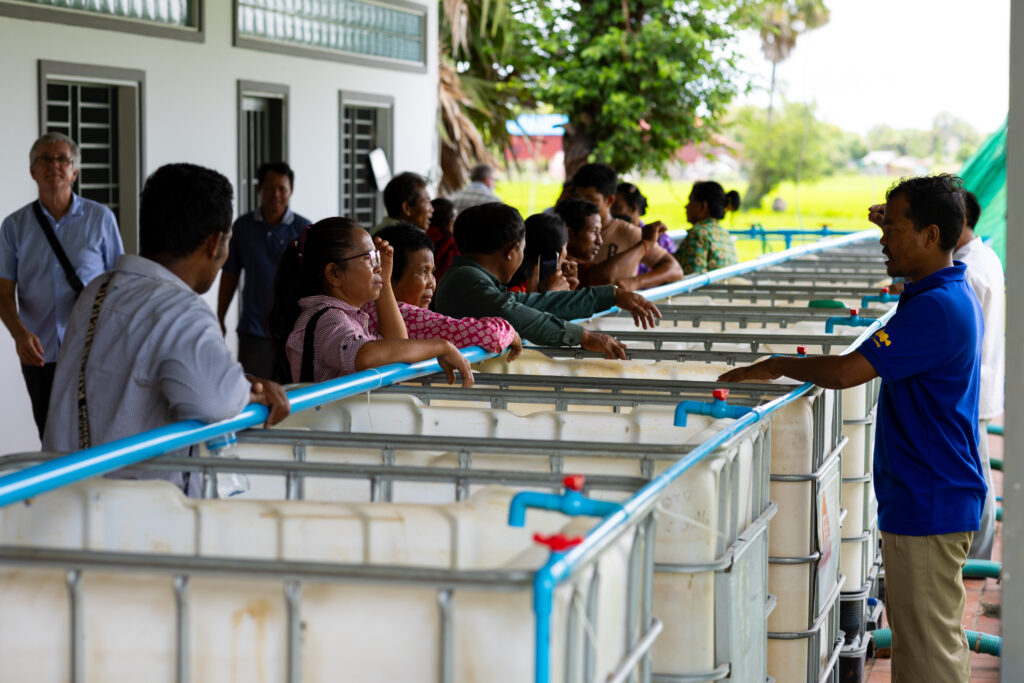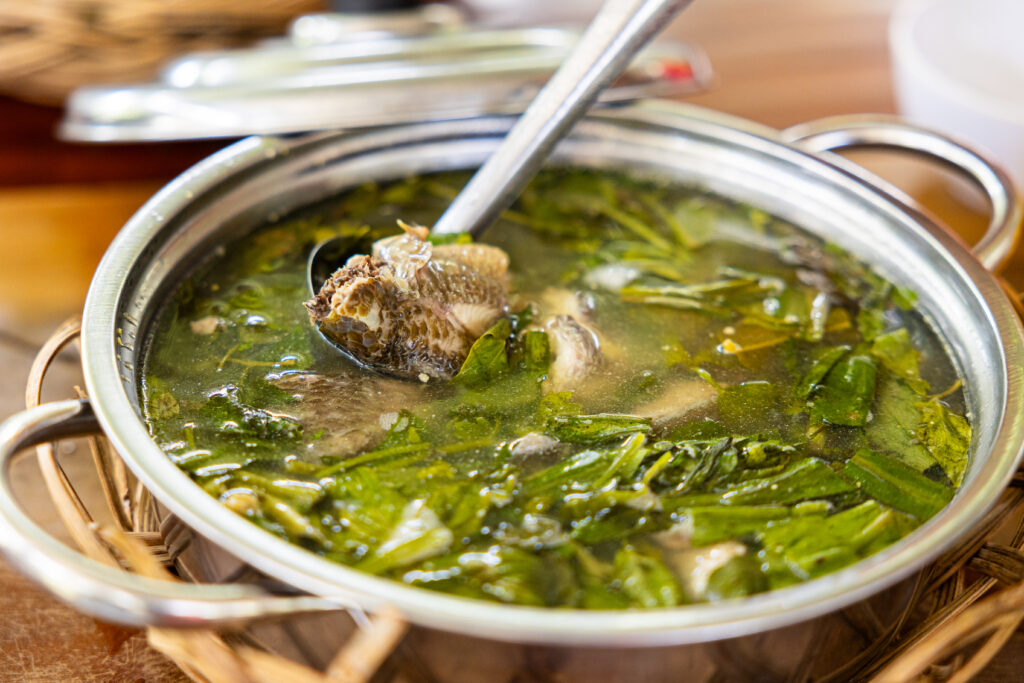
Fish farmers and extension agents circled the latest in aquaculture innovations for Cambodia in August at an ASA World Initiative for Soy in Human Health aquaculture field day. The educational event was an aquaculture kicking-the-tires opportunity. While the attendees’ fish farming experience ranged from two to 22 years, all came to gain knowledge about WISHH’s Cambodian-style in-pond raceway systems, aerators, nurseries and soy-based feeds for fish.
New aquaculture technologies are key for the country that is home to one of the highest per capita rates of fish consumption in the world. More than 80 percent of the total animal protein in the Cambodian diet comes from fish and other aquatic animals. Such demand is also an opportunity to increase U.S. Soy trade so U.S. Soy organizations are supporting WISHH’s work in Cambodia along with 28 other countries in Asia, sub-Saharan Africa and Latin America.
Asia Division Director Alan F. Poock leads WISHH’s work in the region, including to leverage different soy checkoff funding sources that launch the new technologies. “The United Soybean Board’s support for aquaculture extension agents is key so Cambodian farmers who want to try new technologies have the technical support they need to succeed,” says Poock.

WISHH builds and coordinates partnerships that unlock local protein solutions in Cambodia. “The Missouri Soybean Merchandising Council’s checkoff support allowed us to introduce IPRS in 2019. WISHH’s local Cambodian partner has now taken that original design to a fifth-generation model that is even more well suited to Cambodia’s unique needs, including extreme wet and dry seasons,” adds Poock. “The Nebraska soy checkoff has supported aeration trials that show the many benefits of using aerators to improve water quality. Illinois soy checkoff support of WISHH offered a unique opportunity to lead trials that yielded promising preliminary results that Cambodia’s popular snakehead fish, a carnivore, would eat soy-based feeds. The Illinois checkoff support also allowed WISHH to study snakehead growth in IPRS.”
To further put the puzzle pieces together, WISHH is aligning all these soy checkoff investments with its USDA Food for Progress aquaculture project in Cambodia. The USDA Commercialization of Aquaculture for Sustainable Trade (CAST)-Cambodia is already working closely with the Cambodian government, academic institutions and others.
CAST also expanded the talent base of young professionals. The three extension agents who worked at WISHH’s August field day are graduates of Cambodia’s Royal University of Agriculture. During recruitment, CAST’s additional training courses and hands-on internships made them stand out among their peers or other university graduates.
Extension agent, Ok Penh, reports, “What motivates me to work here is the use of feed and the benefits of soy-based feeds, especially the safety of them. … It is good for Cambodia to bring these technologies into our country. We have received feedback that fish raised in this (IPRS) system are recognized by food processing companies.”
Toeng Teng, another WISHH USB-funded extension agent, also took the job because he sees its importance to his country. “I want to accelerate the aquaculture sector so we won’t have to import fish from abroad. …I believe that soy feed is very useful and even carnivorous fish can benefit from the protein in soy. This is important for us Cambodians, as well as the fish, as we could use more protein in our diets.”
The field day gave him the opportunity to introduce the latest offspring of innovation. WISHH’s work with Made for This Fabrication started about three years ago when the local organization took the first generation of Cambodian IPRS and made improvements to that design. The enterprise has added many new features for its fifth-generation model that is easier to install, cuts costs with streamlined materials, and boosts the life expectancy of the IPRS with improved paints. The latest models are also upgraded to prevent fish from escaping and more. Two new sizes are now available: mini–2.5m³ volume capacity vs 5 normal, and super-sized–20m³ volume capacity.

The August field day included launch of a new Made for This Fabrication product – fish nurseries. Hatcheries in Cambodia are only able to supply about 10% of the in-country demand for fingerlings. When fingerlings are transported over long distances, they face high mortality due to lack of oxygen, overcrowding, stress and change of water conditions. Young fish, called fry, transport much better. If the farmer can raise the fry in their own nursery in the same kind of water as their pond, they can reduce the stress of transportation. As a result, they reduce the fish mortality rate and save money.
During the field day, Toeng and the other extension agents explained the hatchery systems and proper management, including the need for constant turnover of water at about 2 cubic meters per day, the right size of feed and cleaning of tanks.
The farmers reported the value of such information. “What I learned today I will take to further develop my business and make it even better,” said Sim Kim Heang who has raised fish for about six years. “This is the first time for us farmers to learn how to raise fish like this, and it’s really good because this (IPRS) system has the benefits of oxygen for the fish. Raising fish in this system is also easy for me to sell fish to customers because I no longer have to hire people to help harvest.”
